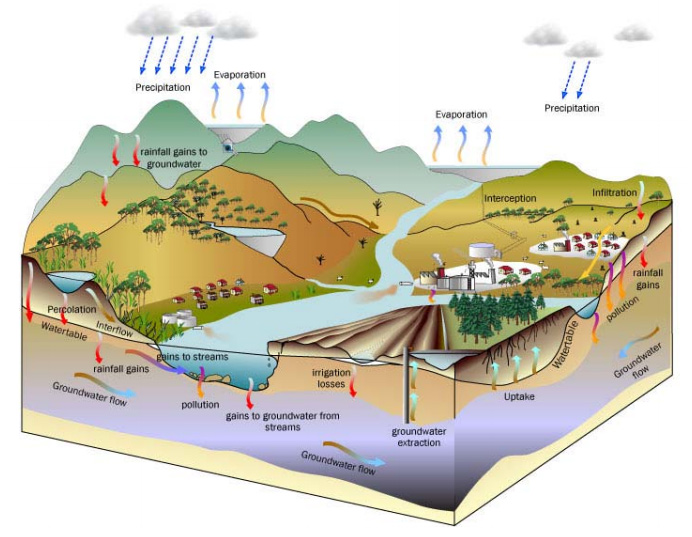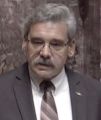Sign up to receive Waterbucket eNews
Learn about the champions that are leading changes in practice (on all instances).
By clicking the Subscribe button, you agree to this site’s Privacy Policy. Your info will never be sold, rented or given away.
The Partnership for Water Sustainability in British Columbia (the Partnership) is the hub for a “convening for action” network in the local government setting, is responsible for delivering the Water Sustainability Action Plan program through partnerships and collaboration, and embraces a vision for shared responsibility where all the players align their efforts for the greater common good. To learn about the Partnership’s genesis and history, visit About Us.
The Partnership plays a bridging role between provincial and local governments, and between local governments and the stewardship sector; and is the steward for Stormwater Planning: A Guidebook for British Columbia, a provincial guidance document released in 2002.
Under the Action Plan umbrella, the Partnership collaborates with government and others to develop methodologies, tools and resources to support implementation of the Whole-System, Water Balance Approach to land use, infrastructure servicing and asset management.

Released by the provincial government in February 2004, the Water Sustainability Action Plan provides a partnership umbrella for advancing on-the-ground initiatives in the local government setting.
The Action Plan is nested within Living Water Smart, British Columbia’s Water Plan. Released in 2008, Living Water Smart was the provincial government’s call to action, and to this day transcends governments.
In the early years, initiatives were inspired by and built on the conceptual foundation provided by A Water Conservation Strategy for British Columbia, released in 1998. Ian McHarg’s “Design With Nature” vision has influenced Action Plan implementation. The desired outcome is to achieve settlement, economy and ecology in balance.
 "When I was on the faculty at the Harvard Business School, I began my research into the concept of a networked approach that is more focused on network-building and trust-based relationships, and less about building an organization to get to your mission impact. People learn from and are inspired by stories. Work is easier, more effective and more fun when people collaborate. The big idea is to try and seed a culture change and shift in climate-conservation work to one that really values the power of relationships and networks,” explained Jane ...more
"When I was on the faculty at the Harvard Business School, I began my research into the concept of a networked approach that is more focused on network-building and trust-based relationships, and less about building an organization to get to your mission impact. People learn from and are inspired by stories. Work is easier, more effective and more fun when people collaborate. The big idea is to try and seed a culture change and shift in climate-conservation work to one that really values the power of relationships and networks,” explained Jane ...more "The Water Act had evolved over many years. We recognized the limitations of the Water Act. And I really appreciated that government was willing to go out on a limb to replace it. We looked at replacing priority rights with a different form of water allocation. But the decision was, continue the foundation of priority rights. The WSA respects priority rights BUT there is a provision that if you get into a situation where communities rely on a small amount of water for essential household needs, there is a provision to allow that to ...more
"The Water Act had evolved over many years. We recognized the limitations of the Water Act. And I really appreciated that government was willing to go out on a limb to replace it. We looked at replacing priority rights with a different form of water allocation. But the decision was, continue the foundation of priority rights. The WSA respects priority rights BUT there is a provision that if you get into a situation where communities rely on a small amount of water for essential household needs, there is a provision to allow that to ...more "Asset Management concepts have been around long enough for staff and elected officials to have an awareness of the issues. We need to truly begin addressing the struggle to implement. One of the big priorities for me this year is to just start bringing Asset Management back to reality. The theme that I am now promoting is this, just tell us your story because people can learn from stories. It does not have to be perfect. We know it is not perfect. But do not be afraid to tell the story. Passing on knowledge really ...more
"Asset Management concepts have been around long enough for staff and elected officials to have an awareness of the issues. We need to truly begin addressing the struggle to implement. One of the big priorities for me this year is to just start bringing Asset Management back to reality. The theme that I am now promoting is this, just tell us your story because people can learn from stories. It does not have to be perfect. We know it is not perfect. But do not be afraid to tell the story. Passing on knowledge really ...more Susan Haid played a leadership role in trailblazing an ecosystem-based approach to community planning in BC. This approach flowed from passage of the Fish Protection Act 1997. "With an ecosystem-based approach to planning, you can look back and you can look forward. The principles of diversity, interconnectivity, and redundancy within a systems approach are very robust and stand the test of time," stated Susan Haid. In the 2000s, leaders ventured into uncharted territory. Great changes took place. These were possible because individuals took personal risks to innovate. ...more
Susan Haid played a leadership role in trailblazing an ecosystem-based approach to community planning in BC. This approach flowed from passage of the Fish Protection Act 1997. "With an ecosystem-based approach to planning, you can look back and you can look forward. The principles of diversity, interconnectivity, and redundancy within a systems approach are very robust and stand the test of time," stated Susan Haid. In the 2000s, leaders ventured into uncharted territory. Great changes took place. These were possible because individuals took personal risks to innovate. ...more “Politics prevents you from doing the right thing because of the political lens that is put on everything. It was frustrating when I tried to bring the reality of the clearcut logging situation before my colleagues. And getting ignored because it did not fit the political agenda. Nobody seemed to care about the science. In the political world, it is based on whatever the flavour of the month is rather than what is right. Politicians ignore what they do not understand. By ignoring the consequences of clearcut logging, they put themselves in a pretty ...more
“Politics prevents you from doing the right thing because of the political lens that is put on everything. It was frustrating when I tried to bring the reality of the clearcut logging situation before my colleagues. And getting ignored because it did not fit the political agenda. Nobody seemed to care about the science. In the political world, it is based on whatever the flavour of the month is rather than what is right. Politicians ignore what they do not understand. By ignoring the consequences of clearcut logging, they put themselves in a pretty ...more Fiona Crofton was a life-long environmentalist. She was a leader, a teacher, a facilitator, and mentor, always pursuing her passion for a better and more sustainable world. A former professor in the Civil Engineering Department at the University of British Columbia, Fiona designed the 1st degree-credited course on sustainability globally. It was an award-winning, highly interactive, multi-discipline, web-based course in the engineering faculty but open to all students. She had developed similar courses for other universities and institutes, courses which continue to be popular and ...more
Fiona Crofton was a life-long environmentalist. She was a leader, a teacher, a facilitator, and mentor, always pursuing her passion for a better and more sustainable world. A former professor in the Civil Engineering Department at the University of British Columbia, Fiona designed the 1st degree-credited course on sustainability globally. It was an award-winning, highly interactive, multi-discipline, web-based course in the engineering faculty but open to all students. She had developed similar courses for other universities and institutes, courses which continue to be popular and ...more "It took us eight years to get Kelowna's first Water Security Plan across the finish line. We define our responsibilities within this plan. We have accomplished something special. I see it. Others see it. Plan outcomes are innovative, achievable and improve things little by little. We achieve them by listening to people, working with their ideas, needs and concerns. Sometimes it is necessary to say to people that you are not going to get what you want right away. It may take 75 years or more. And in this case, it might just start ...more
"It took us eight years to get Kelowna's first Water Security Plan across the finish line. We define our responsibilities within this plan. We have accomplished something special. I see it. Others see it. Plan outcomes are innovative, achievable and improve things little by little. We achieve them by listening to people, working with their ideas, needs and concerns. Sometimes it is necessary to say to people that you are not going to get what you want right away. It may take 75 years or more. And in this case, it might just start ...more Christina Gemino titled her master's thesis The Silent Death of Agriculture in Metro Vancouver. "The non-sanctioned expansion of industrial use on agricultural land was a factor that drove my research. It can forever change the agricultural land base. There was a 121% increase in ALR parcels with industrial use from 2016 through 2022. It should be ZERO percent. You can build warehouses and industrial stuff pretty well anywhere you have a piece of property. You cannot build a farm by bringing in soil. We have to find other places for this other stuff," stated ...more
Christina Gemino titled her master's thesis The Silent Death of Agriculture in Metro Vancouver. "The non-sanctioned expansion of industrial use on agricultural land was a factor that drove my research. It can forever change the agricultural land base. There was a 121% increase in ALR parcels with industrial use from 2016 through 2022. It should be ZERO percent. You can build warehouses and industrial stuff pretty well anywhere you have a piece of property. You cannot build a farm by bringing in soil. We have to find other places for this other stuff," stated ...more In the story behind the story, Mark Angelo explains why his title is River Magic; why the Fraser River is the heart and soul of BC; and why Guichon Creek in Burnaby shows never give up. “The Fraser River has been such a big part of my life and a river that is dear to my heart. In 1975, I spent the entire summer paddling down the entire 1375-kilometre length of the Fraser River. I was so enamoured with the river, its powers, its beauty, its diversity. Ever since, I have referred to and ...more
In the story behind the story, Mark Angelo explains why his title is River Magic; why the Fraser River is the heart and soul of BC; and why Guichon Creek in Burnaby shows never give up. “The Fraser River has been such a big part of my life and a river that is dear to my heart. In 1975, I spent the entire summer paddling down the entire 1375-kilometre length of the Fraser River. I was so enamoured with the river, its powers, its beauty, its diversity. Ever since, I have referred to and ...more "I have been doing collective impact work in the community for more than 10 years. It takes time, it really does. It is only NOW that it is really starting to have a profound impact on some of the other initiatives that we are doing. It is really hard to do really hard work unless you trust and have a relationship with the people doing the work.We know it takes a sustained effort and a sustained backbone or people at the helm to drive it. ...more
"I have been doing collective impact work in the community for more than 10 years. It takes time, it really does. It is only NOW that it is really starting to have a profound impact on some of the other initiatives that we are doing. It is really hard to do really hard work unless you trust and have a relationship with the people doing the work.We know it takes a sustained effort and a sustained backbone or people at the helm to drive it. ...morePartnership raises red flag on an emerging crisis related to well registration under existing groundwater legislation
March 1, 2022 is the deadline for historical non-domestic groundwater users to apply for a licence to retain their right to divert and use groundwater …more
Guided by a vision to reconnect people, fish, land and water
The Partnership’s guiding philosophy is to help others be successful. When they are successful, we are successful. The Partnership is led by a team of mission-focused volunteers, elders and collaborators. These individuals bring experience, knowledge and wisdom to the Partnership roundtable …more
We honour commitment to the Living Water Smart vision
We celebrate the legacies of individuals who rose to the moment, showed courage in embracing a challenge, and championed changes in water-centric practices. But memories are shorter than most people realize. Unless we record the stories of these champions for posterity, nobody will ever know what they did …more
Explore the videos on the waterbucket YouTube channel
Videos help bring to life the history of programs under the Water Sustainability Action Plan for British Columbia. They represent a treasure trove of information. They capture moments in time. Videos are linked to stories posted on this site. This adds a human dimension – real people sharing their experiences …more
Access stories of interest from around the globe
Are you interested in breaking news on relevant topics, such as our changing climate? If so, follow the Partnership on Twitter to stay current with emerging issues. In this way, you can access a diversity of perspectives. Then you can assess the relevance and significance of B.C. initiatives in a global context …more
Embrace ‘design with nature’ approaches, build greener communities, and adapt to a changing water cycle (balance)
A set of downloadable documents share experience, knowledge and wisdom. The goal is to build bridges of understanding and pass the baton from the past to the present and future…more
Watch the “video trilogy” again and again on YouTube!
Broadcast in November – December 2020, each video is a 2-hour documentary that concludes with a Q&A segment…more
Restore urban creekshed hydrology, prevent stream erosion, enhance summer baseflows, ensure fish survival
BC’s new reality: warmer and wetter winters; longer and drier summers. The altered distribution of the seasonal water balance has high-flow and low-flow consequences for streams…more
Browse our online library of publications and downloads
Know your history. Don’t reinvent the wheel. Rather, turn the wheel. Do, learn, adapt and do better. Water sustainability will be achieved as an outcome of green infrastructure policies and practices…more
Emphasize social values to appreciate and establish worth!
EAP is an evolution of green infrastructure ideas and practices. It uses the concept of the ‘natural commons’ to understand how the community uses or expects to use ecological services…more
Look at the Water Cycle differently
Reconciliation: go back to the headwaters of where we got our relationships with water and with one another wrong; and then start back down the river of time – this time together…more
Mimic the natural water balance and protect stream health
Through inter-regional collaboration and capacity-building, the IREI mission is to develop approaches, tools and resources that advance the whole-system, water balance approach in BC…more
Reduce life-cycle costs and risks!
Hydrology is the engine that powers ecological services. Regulatory objectives for ‘sustainable service delivery’ in BC make it possible to transform drainage practice by ‘designing with nature’…more
TEST DRIVE IT NOW
Using the Express, the homeowner can quickly size and test landscape-based solutions – such as rain gardens and absorbent soil – that slow, sink and spread rainwater …more
Bend the ‘shifting baseline’ to replicate desired conditions
A progress report on how local governments on both sides of the Georgia Basin are ‘learning by doing’ to integrate land use, infrastructure servicing, financial and ecological planning…more
Third Annual Vancouver Island Symposium on Water Stewardship in a Changing Climate
Collaboration is essential to mobilize and respond effectively to the impacts of climate change and to reconnect the hydrology and ecology in the built and natural environments that surround us…more
Second Annual Vancouver Island Symposium on Water Stewardship in a Changing Climate
Good strategies are our path to success. Reconnect hydrology and ecology – what happens on the land in the creekshed matters to streams! Shrink our destructive footprint while growing our restorative footprint – sustainable is attainable!…more
First Annual Vancouver Island Symposium on Water Stewardship in a Changing Climate
Engagement of community through stewardship is a credible formula to be encouraged and mainstreamed at every opportunity. Recognition that the whole is greater than the sum of the parts is the energy that stokes creativity and determination…more
How climate change will affect the future
All of us have an impact on the land, on the water, and on the way things look. Decisions made today ripple through time. Showcasing of ‘big ideas’ informs choices about land and water…more
Resilient Rainwater Management / Water Balance Express
Resilient draws attention to the future, and help focus thought and action. Resilient in a biological sense is primarily the ability for an ecosystem to recover from an intervention….more
The Partnership is a legal entity, incorporated in 2010 as a not-for-profit society, and delivers services on behalf of government. It originated as an inter-governmental partnership, formed in 2002 to fund and develop the Water Balance Model as a web-based decision support tool. The Water Balance Model was created as an extension of Stormwater Planning: A Guidebook for British Columbia. The objective? Facilitate application of the Water Balance Methodology. The desired outcome? Protect stream health in urbanizing watersheds. When the Water Sustainability Action Plan was released in 2004, the Water Balance Model was the centrepiece initiative. Similarly, the waterbucket.ca website was also an Action Plan initiative. The objective? Record our history as we create it. Showcase success stories. Celebrate the champions who lead by example. Action Plan experience informed development of Living Water Smart, British Columbia’s Water Plan, released in 2008, as well as the provincial government’s companion Green Communities initiative, also in 2008.
Inter-governmental collaboration and funding enable the Partnership for Sustainability in British Columbia to collaborate with others to develop (and share) approaches, tools and resources; as well as provide teaching, training and mentoring.
The educational goal of the Partnership for Water Sustainability in British Columbia is to build practitioner capacity within the local government setting to implement a whole-system, water balance approach branded as Sustainable Watershed Systems, through Asset Management.
Comprehensive and coordinated use of the decision support tools and calculators listed below, which includes calculators developed by others (i.e. the bottom four), would help communities achieve this desired outcome.
Access to more QUALHYMO commands enables advanced problem-solving to establish watershed-specific water balance performance targets.
A planning tool for assessing green infrastructure effectiveness at neighbourhood or individual property scales. Compare scenarios for runoff reduction.
An interactive tool for homeowners. Click and drag components. Learn what it means and how to slow, spread and sink rainwater that runs off hard surfaces.
Continuous and multi-year simulation modelling of hydrologic processes and water quality. Model has watershed, receiving stream and BMP components.
Assess level-of-service for conveyance systems. Consider impact of both climate change and land use change at the same time, and with the same tool.
Developed to support provincial grant applications, this tool is used by communities to demonstrate how fiscal and water savings would be achieved.
Developed to support the BC Groundwater Regulation, helps agriculture water users estimate annual irrigation or livestock water demands for farms.
Uses real time evapotranspiration data from climate stations to determine drip irrigation run times and sprinkler irrigation schedules for agriculture.
Uses real time evapotranspiration data from climate stations across Canada to determine landscape irrigation system run times.
Uses a provincial 500-metre gridded climate dataset to establish the allowable ‘water budget’ for outdoor water use for each and every property in BC.
Obtains real time evapotranspiration data for climate stations across Canada. A crop’s water requirement or water usage is directly related to ET.